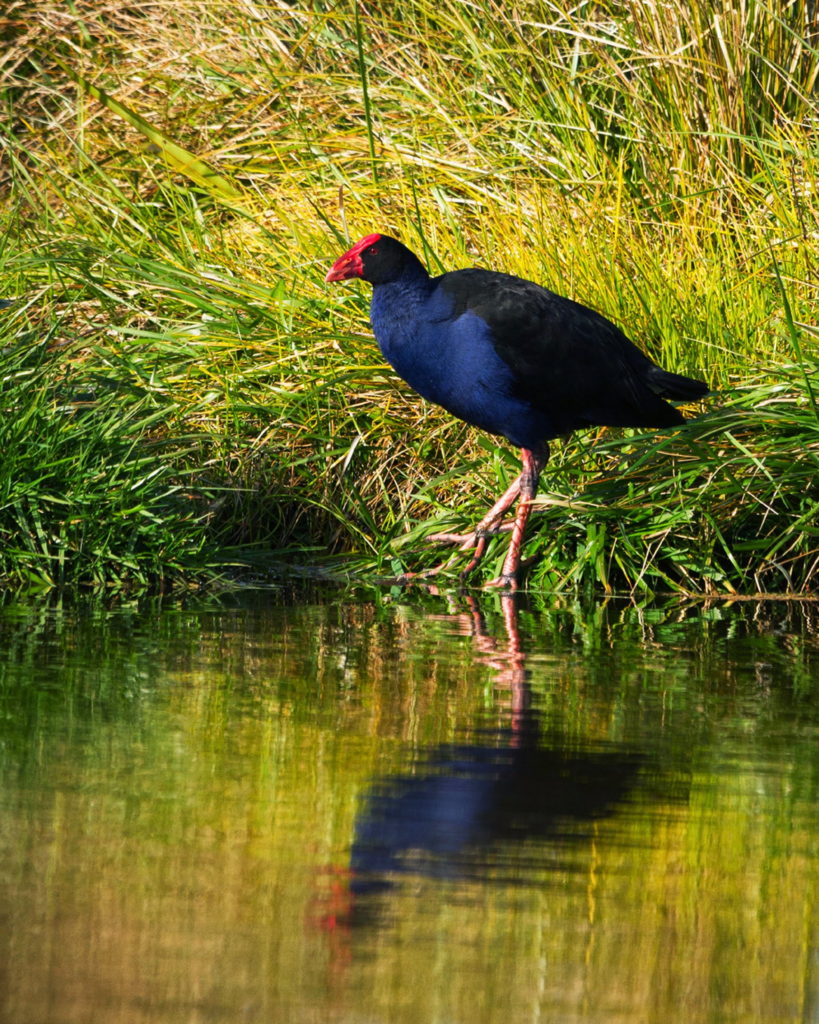Pukeko
The pukeko or purple swamp hen (Porphyrio melanotus) can often be seen around the Inlet, and especially within the Wildlife Reserve at the eastern end.
Many people get confused when they think about pukeko. On the one hand, this pretty bird is a symbol of New Zealand, nearly as well known as the kiwi. Pukeko garden ornaments are found all over the country, and you will also find pukeko printed on tea towels and cards and represented in jewelery. The birds can be seen on many of the nation’s roadsides, and have even featured in TV advertisements, so most New Zealanders are familiar with them.
However, not everyone thinks that they are cute and good to watch, because sometimes they move into farmland where they can wreck pasture and crops. They can also eat eggs, baby birds and frogs, and sometimes strip gardens of newly planted shrubs and trees.
Pukeko usually live in wet areas near water, swamps, river banks or in estuaries like the Pāuatahanui Inlet, but particularly where there is adjacent open land and pasture. They can swim, run and fly and their call is a very loud harsh shriek. They are mostly vegetarian, stripping seeds from plants, biting off shoots and digging up roots with their strong beaks. But the pukeko stalks animal food after the breeding season because the chicks mainly eat flesh. When it eats, the pukeko often holds its food in one claw and then moves it into its mouth. You risk a finger if presenting it to a more curious example as the beak is sharp and has a hefty bite.

Plumage is striking. There is a beautiful purplish-blue neck and chest, and a black back. The legs and feet are orange and the bill, a bright red. White feathers under the tail are displayed when the bird is agitated.
Pukeko moult in the spring but then cannot fly for a month until new feathers grow.
The pukeko’s nest is quite flat. It is built on the ground from grass and rushes, which the pukeko stamps down before laying its eggs. The eggs are cream with brown blotches at one end. Pukeko nesting habits are really unusual because often six or seven will share the same nest and several females might lay their eggs there during the same breeding season. All the adult birds in the nest share the chore of sitting on the eggs. The males usually sit on the eggs at night, and when the chicks hatch all the adult birds share the care and the feeding of them. If danger strikes they can band together to frighten the intruder off.